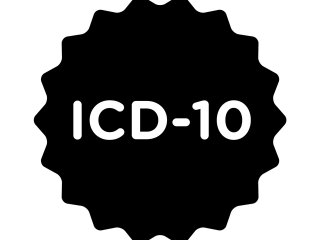
- Description
- Objectives
- Outline
- Materials
- System Requirements
Are you interested in a career in the medical industry? This field is rapidly growing and there is high demand for individuals with knowledge of medical office operations, which includes diagnostic and procedural coding. Our Discover a Career as a Medical Coder provides an overview of essential coding concepts that are relevant in today’s coding systems. We will cover the history of the medical coding profession and provide an introduction to HIPAA, CPT, ICD-9-CM, HCPCS and the transition to ICD-10-CM.
After completing this course, you should be able to:
- Recognize the history of medical coding and how codes are used
- Identify the principles of CPT and HIPAA
- Recall chapter specific codes, as well as codes for specific body systems
- List how to properly record medical documentation
Discover a Career as a Medical Coder Module 1
The Medical Coding Profession
Medical coding is a system that uses specific codes for medical procedures and services patients receive. They are key to accurately preparing medical bills. This week you will be introduced to the PPS (Prospective Payment System), Diagnostic Related Groups (DRGs), why medical codes matter and common forms used in the field. We will also discuss ethical responsibilities of medical coders and confidentiality.
- History of Medical Coding
- Ethical Responsibilities
- Training in Medical Coding
- How Medical Codes Are Used
- Common Forms Used
Discover a Career as a Medical Coder Module 2
Fundamentals of a Medical Coding System
Whether you are interested in a career in medical coding or just want to learn more about coding itself, it is important to understand the basics of the medical coding system. This module covers current procedure terminology, the foundation of the American Medical Association, the World Health Organization (WHO), anatomy of the ICD-9-CM code, and E-Codes and V-Codes. The overview of HIPAA, how it’s enforced and penalties are also introduced.
- Current Procedure Terminology
- History and Usage of the ICD-9-CM
- What is HIPAA?
- Using Chapter Specific Codes
- E-Codes and V-Codes
Discover a Career as a Medical Coder Module 3
Codes for Body Systems
This week provides a comprehensive overview of the body systems and their respective codes. We cover codes for various conditions, procedures, surgeries, infections and female and male specific diseases. Various scenarios are given comparing the codes of the ICD-9-CM and the ICD-10-CM, as well the components of the ICD-10-PCS.
- Integumentary System
- Respiratory System
- Cardiovascular System
- Digestive and Endocrine System
- Musculoskeletal System
- Male and Female Physiology
Discover a Career as a Medical Coder Module 4
Coding Documentation and ICD-10 Transition
Evaluation and Management (E/M) codes are a system that all health care providers in the U.S. must use in order to receive reimbursement by the various health maintenance organizations (HMOs) like Medicare, Medicaid and other private insurance organizations. This week you will learn about the history of medical record documentation, modifying codes and the benefits of the ICD-10-CM transition.
- Medical Record Documentation
- E/M Coding
- Coding Modifiers
- Surgical Packages
- Transitioning to ICD-10
Ed4Career is committed to being both environmentally conscious and making it easier for you to study! We’re making your education mobile! All of our textbooks are now provided as eTextbooks. You can access them on your laptop, tablet, or mobile device and can study anytime, anywhere.
The move away from physical books to eTextbooks means you get the latest, most up-to-date version available. This also makes your training more accessible, so you can study anywhere you have your phone or tablet. The best part is that all materials are included in your training cost so there are NO extra fees for books!
Internet Connection
- Broadband or High-Speed - DSL, Cable, and Wireless Connections
*Dial-Up internet connections will result in a diminished online experience. Classroom pages may load slowly and viewing large audio and video files may not be possible.
Hardware Requirements
- Processor - 2GHz Processor or Higher
- Memory - 1 GB RAM Minimum Recommended
PC Software Requirements
- Operating Systems - Windows 7 or higher
- Microsoft Office 2013 or higher. Also, you could use a general Word Processing application to save and open Microsoft Office formats (.doc, .docx, .xls, .xlsx, .ppt, .pptx)
- Internet Browsers - Google Chrome is highly recommended
- Cookies MUST be enabled
- Pop-ups MUST be allowed (Pop-up Blocker disabled)
- The Kindle Reader App or VitalSource Bookshelf App are needed for many of our courses (No special equipment needed. This can be downloaded for FREE onto your computer.)
- PowerPoint Viewer (if you do not have PowerPoint)
- Adobe PDF Reader
- QuickTime, Windows Media Player &/or Real Player
MAC Software Requirements
- Operating Systems - Mac OS x 10 or higher with Windows
- Mac office programs or a Word Processing application to save and open Microsoft Office formats (.doc, .docx, .xls, .xlsx, .ppt, .pptx)
- Internet Browsers- Google Chrome is highly recommended
- Cookies MUST be enabled
- Pop-ups MUST be allowed (Pop-up Blocker disabled)
- The Kindle Reader App or VitalSource Bookshelf App are needed for many of our courses (No special equipment needed. This can be downloaded for FREE onto your computer.)
- PowerPoint Viewer (if you do not have PowerPoint)
- Adobe PDF Reader
- Apple QuickTime Media Player
